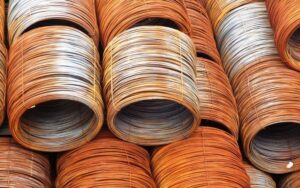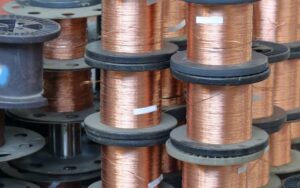The central part of the micro-coil production process is the coil winding process. Winding occurs around a core through the use of ultra-fine wires. Through the winding process, manufacturers can provide different shapes to the micro-coils. However, the initial step is to isolate or coat the wires through the insulation process n order to safeguard the wires from external influences. Then the manufacturers use isolated wires for the coil winding process in order to develop an electromagnetic induction.
Insulated copper wires are commonly used by most manufacturers for the production of micro-coils. A polyamide base material is extremely efficient for the insulation process. However, you can use multiple other materials for the insulation process, the only thing you need to consider is the effective resistance to breakdown voltage and high temperatures.
The Shape of the Micro-Coils:
The purpose of application plays the most significant role to determine the shape of the coils. Different shapes of the coils serve different purposes. This is because different shapes can produce different electrical values. Therefore, the assessment of inner and outer dimensions is crucial to designing the shape of the coils. The common shapes of the micro-coils are elliptical, round, and rectangular; however, you can produce coils of other shapes by making suitable changes in the winding process.
Winding Process of Medical Coils:
When it comes to the winding process of medical coils, size becomes the most crucial factor. The size of the coils should be very tiny so that the doctors can insert the coils into different body regions. For example, when the doctors insert the coils into the vein, the coils have to be a maximum of 0.8 mm wide with insulated wires. This tiny size creates the necessity for the built in-house and highly specialized equipment and machinery.
Although winding of the insulated copper wires occurs around a core or pin, coils can be coreless if the manufacturers eradicate the core after the winding process. A coreless coil indicates that the coil is self-bounded to itself. Manufacturers can also conduct the winding process around cylindrical or rectangular support. When they remove the support after the winding process, the coil looks like a rectangular or cylindrical coil.
To deal with the size constraint and minimize the coil size, most modern manufacturers use ultra-fine wires of 8 to 9 microns diameter. The use of ultra-fine wires makes the coil suitable for medical applications.
Manufacturing Process of Micro-Coils:
Apart from the winding process, manufacturers have to do several other activities for the manufacturing of the micro-coils. When it comes to building micro-coils for medical sensors, the two main things that the manufacturers should consider are-
- An effective knowledge about the micro-coil winding process, and
- Specialized equipment and technology for the winding process.
For the micro-coil winding process, you can not use the purchased equipment, instead, you should design and develop the machinery in-house starting from scratch. Whether you need equipment for wire terminals or the soldering process, you should build in-house specialized machinery.
Ultra-fine wires also offer connectivity within the medical devices and help to build inductive components. However, without innovative technologies, it will be impossible to work with ultra-fine wires. There is a variety of methods to handle these wires. The major challenge for handling the ultra-fine wires is their small size. The ultra-fine wires are five to ten times thinner than human hair. The diameter of the cross-section of an ultra-fine wire is approximately 59 AWG (9 microns or 0.00035 inches). There are also some strict tolerance requirements for the final products that are also a great challenge for the manufacturers. Manufacturers also need to deal with multiple environmental and physical constraints.
In order to overcome these challenges, manufacturers should use effective machinery during the winding process to monitor the positions and control the tension of the wires. Custom-made machinery including advanced micro-motion technology and control systems is essential for this purpose.
Manufacturers also need to connect the micro-coils with other components of a medical device through the conductive wires. As traditional heat-based soldering methods are not able to fulfill this purpose, the use of thermal compression bonding technology is increasing. This technology brings several advantages for the micro-coils, such as durable joints, strong connectivity, low manufacturing costs, strain-free, and corrosion-free connections, etc.




